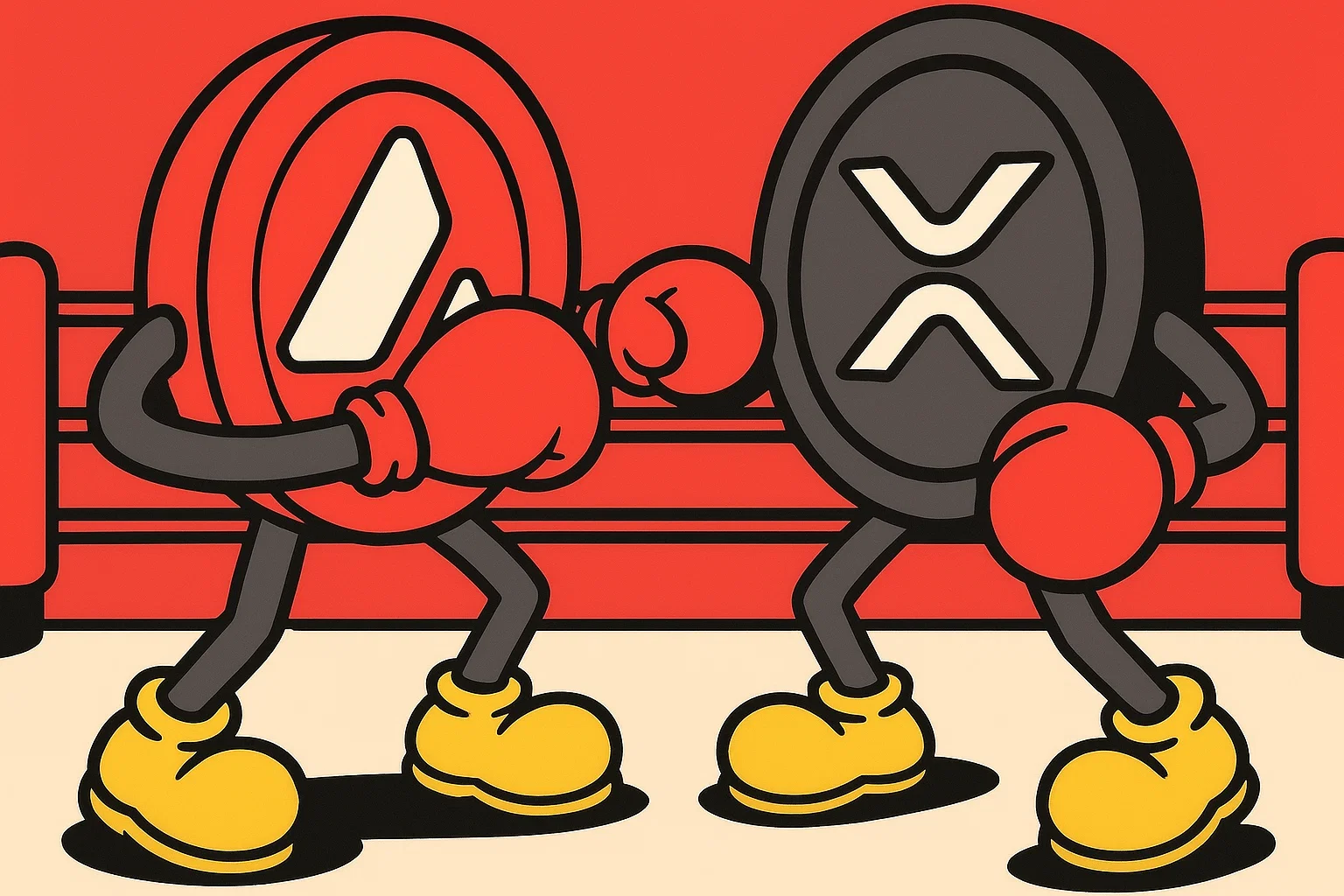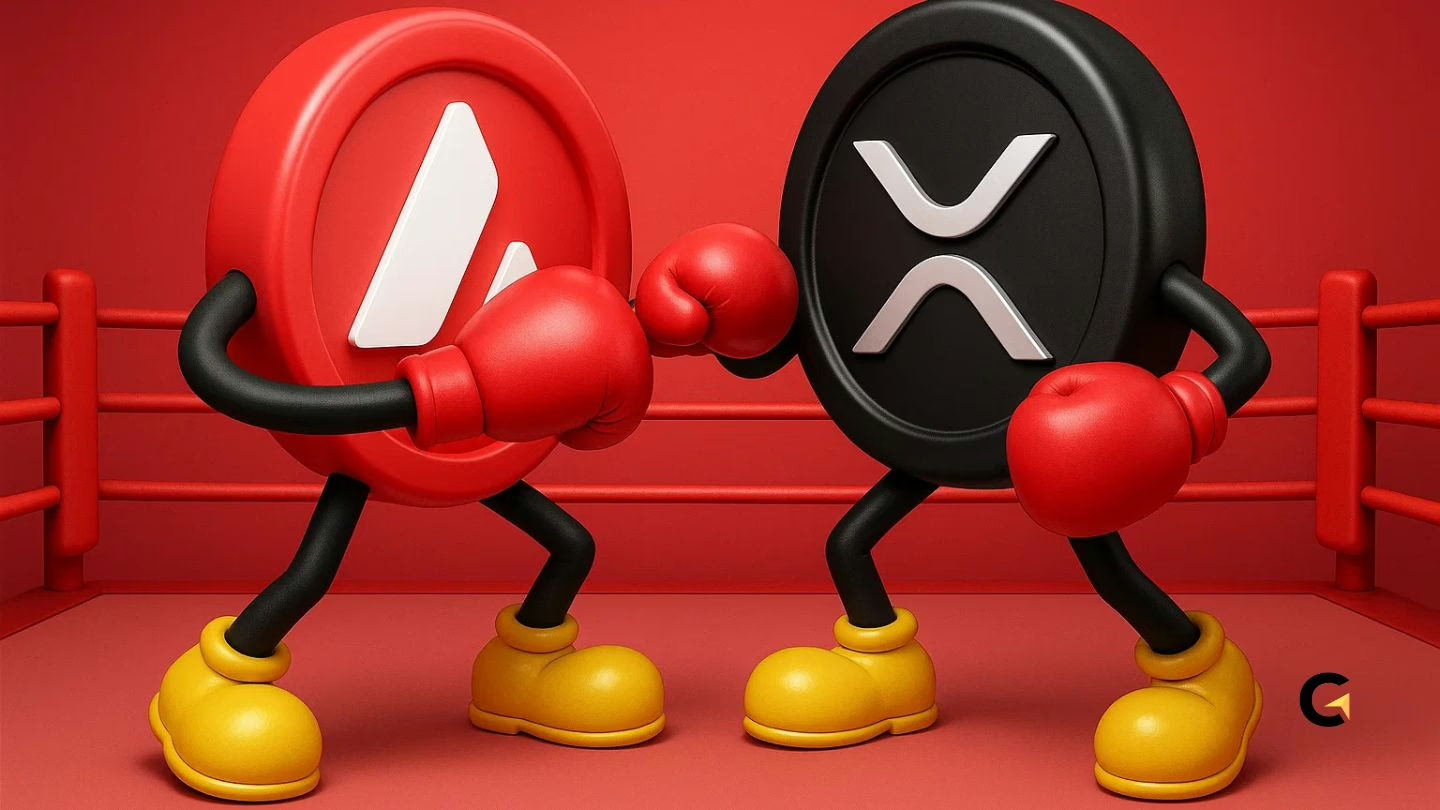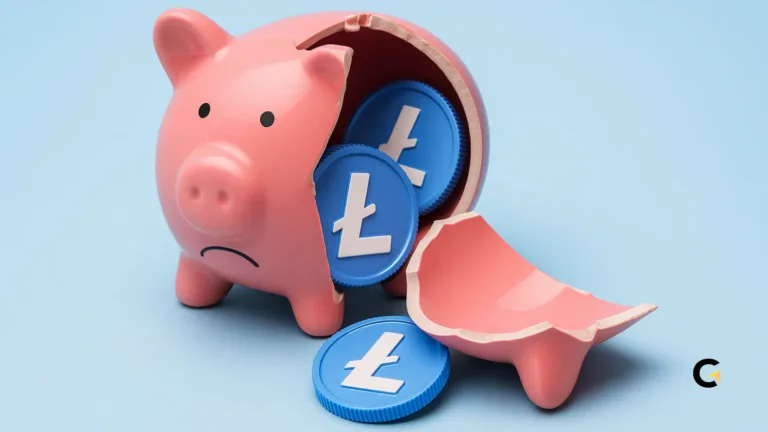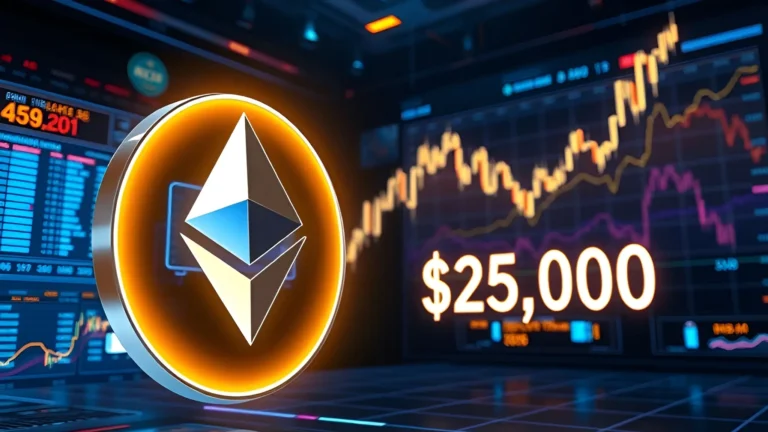Is AVAX better than XRP?
Is AVAX better than XRP? In short, XRP leads in payments, liquidity, and fiat access, with deflationary escrow mechanics that analysts see as bullish for 2025. Avalanche (AVAX) counters with superior programmability, staking yields, and subnet flexibility, but lags XRP in daily volume and institutional penetration.
Key Takeaways:
Hide- Market Depth: XRP has higher liquidity and volume; AVAX trades on thinner books but shows comparable volume-to-cap ratios.
- Supply Models: AVAX is hard-capped with decaying emissions; XRP has fixed total supply, but Ripple's escrow inflates active float.
- Consensus & Finality: AVAX uses Snowman PoS with ~2s finality; XRP runs RPCA with ~3–5s finality and fewer validators.
- Transaction Capacity: AVAX tested up to 4,500 TPS; XRP averages over 2M tx/day with strong settlement history.
- Staking & Yield: AVAX offers ≈7% staking yield; XRP has no staking, only AMM-based DeFi returns.
- Ecosystem Focus: Avalanche leans into gaming, modular subnets, and real-world assets; XRP specializes in FX and banking rails.
- Governance Structure: AVAX enables on-chain validator voting; XRP governance requires 80% validator UNL consensus.
- Compliance Outlook: XRP achieved partial legal clarity post-SEC litigation; AVAX likely classified as a commodity.
- Token Concentration: AVAX has lower top-wallet concentration; XRP’s central risk stems from Ripple’s 41% escrow holdings.
- Growth Potential: AVAX is modular and programmable but less liquid; XRP is liquidity-rich but relies heavily on Ripple infrastructure.
Does AVAX Offer More Than XRP Today?

Could Avalanche’s hard-cap supply and modular Subnets really outshine XRP decades-old banking partnerships and massive settlement volumes? Is Avalanche (AVAX) “sound-money” burn model enough to compete with XRP’s deep liquidity and low-fee rails? Let’s find out which network truly delivers more today.
1. Market Metrics
| (Jul 2025) | AVAX | XRP |
|---|---|---|
| Spot price | $18.03 | $2.09 |
| Market-cap | $7.53 B | $123.5 B |
| 24 h spot volume | $267 M | $5.73 B |
| Volume/M-cap (liquidity) | 3.5 % | 4.6 % |
Interpretation: XRP trades on far deeper order-books, but AVAX’s relative liquidity ratio is comparable, so neither asset appears starved for depth at current float levels.
2. Supply Dynamics
- Avalanche — Hard-cap of 720 M AVAX; 422 M (58%) currently circulating. Block rewards currently inflate supply by ≈ 7.4 % per year, tapering linearly to zero by 2030. All base-layer fees are burned, creating offsetting deflation.
- XRP — Fixed total supply of 100 B XRP minted at genesis; ≈ 59 B in free float, with ≈ 41 B still locked in Ripple’s monthly escrow releases (≤1 B/month). Each transaction destroys 10 drops (0.00001 XRP), creating a very small deflationary effect.
Implication: AVAX offers a predictable, deflation-leaning path once emissions decay, whereas XRP’s effective float gradually expands as Ripple escrows expire.
3. Consensus Mechanism & Security
| Avalanche | XRP Ledger | |
|---|---|---|
| Core algorithm | Snowman PoS (sub-sampled voting) | Ripple Protocol Consensus Algorithm (RPCA) |
| Active validators | ≈ 1,400 main-net nodes | ~150 nodes on the “Unique Node List” (UNL) |
| Finality | < 2 seconds | ~3–5 seconds |
| Notable L1 incidents | No chain reversions; bridge re-audited | Ledger never halted; gateway hacks, not L1 |
Avalanche’s security budget is the staked AVAX plus fee burn, while XRPL security depends on validator reputations and overlap of UNL lists.
4. Network Activity
- Throughput capacity: AVAX lab-tested at ~4,500 TPS; XRPL benchmarked around 1,500 TPS.
- Observed load (Q1 2025 averages):
- Avalanche: 358 k C-Chain tx/day; subnet “Pulsar” pushed total network volume to 1.8 M tx/day and 167 k daily active addresses.
- XRP Ledger: ~2.14 M tx/day with over 600 k ledgers closed—ranking among the highest throughput chains.
- Fee model:
- AVAX: Variable base fee (cut 96% in Avalanche 9000 upgrade), fully burned.
- XRP: Flat 10-drop fee per transaction (destroyed to deter spam).
5. Development & Ecosystem
- Repo vitality:
- Avalanchego: 14 k commits, 2.2 k stars.
- Rippled: 5 k stars, active core development.
- Roadmap highlights:
- Avalanche Teleporter (May 2025): Enables trustless messaging across subnets, paving the way for Layer-3 modularity.
- XLS-30 AMM: Introduced in 2025 to support native DeFi liquidity pools on XRPL.
- dApp traction: Avalanche leads in gaming and real-world assets (RWAs) via subnets, while XRP continues to focus on payments, decentralized exchange (DEX), and FX settlement, with an EVM sidechain under development.
6. Tokenomics & Utility
| AVAX | XRP | |
|---|---|---|
| Native roles | Gas (C/X/P Chains), subnet creation, staking | FX bridge, on-ledger DEX base asset, CLS for CBDCs |
| Staking/yield | Validators earn ≈ 7%, delegators slightly less | No staking; AMM yield only |
| Governance rights | Validators vote on “ACP” protocol parameters | Requires 80% UNL support over 2 weeks for upgrades |
7. Team, Community & Governance
- Founders:
- Avalanche – Dr. Emin Gün Sirer & Ava Labs
- XRP – Chris Larsen, Jed McCaleb, and Ripple Labs
- Community scale: XRP’s X (Twitter) community tops 2.9 M followers vs. Avalanche’s 1.3 M, reflecting its earlier start and broader retail reach.
- Decision-making: Avalanche on-chain changes require ≥60% validator stake support. XRPL relies on decentralized validator consensus, limiting Ripple’s direct control despite its large escrow holdings.
8. Regulatory & Compliance
- XRP: SEC vs. Ripple litigation neared resolution in June 2025. Exchange-based sales of XRP are no longer considered securities; institutional XRP sales remain under separate settlement discussions.
- Avalanche: No active regulatory disputes. Grayscale filed a Nasdaq listing for an Avalanche Trust in April 2025, indicating U.S. regulators likely view AVAX as a commodity.
- Compliance tooling: Avalanche offers “Evergreen” subnets with optional KYC enforcement. XRPL delegates compliance to third-party gateways but includes tools for issuing CBDCs.
9. Ecosystem Risk Factors
| Risk | AVAX | XRP |
|---|---|---|
| Audit posture | Bridge re-audited in Aug 2024 | Code in C++; limited third-party audit disclosures |
| Bridge/oracle reliance | Bridge enclave is central, but uses SGX attestation | RippleNet gateways and CEXs dominate fiat access |
| Holder concentration | Top-10 wallets ~7% (includes exchanges) | Ripple’s escrow still holds ~41% of total supply |
10. Macro & Sentiment Indicators
- BTC correlation (90-day):
- AVAX–BTC: ~0.34
- XRP–BTC: ~0.46 after 2025 rally
- Revenue trends:
- AVAX fee burn dropped 62% QoQ post-fee cut.
- XRP network revenue increased with growing AMM use.
- Social sentiment:
- AVAX: Galaxy Score in high 60s (bullish).
- XRP: Score in high 70s amid optimism over regulatory clarity.
AVAX vs XRP: Which One Has More Growth Potential?
All in all, AVAX excels in EVM-based programmability and customizable subnet deployment. XRP leads in high-throughput payments and global fiat integration.
Meanwhile, AVAX enforces a strict hard cap with meaningful fee burn. XRP’s escrow model supplies future liquidity but adds centralization risk.
However, XRP’s legal clarity (for retail markets) marks a turning point; AVAX is quietly progressing under commodity-like classification.
Then, AVAX provides staking yields and platform modularity at the cost of smaller validator diversity and thinner liquidity. XRP offers strong liquidity, but remains reliant on Ripple’s decisions and validator concentration.







